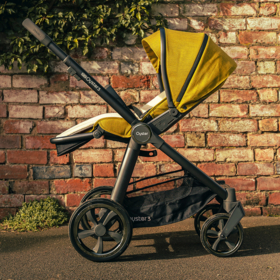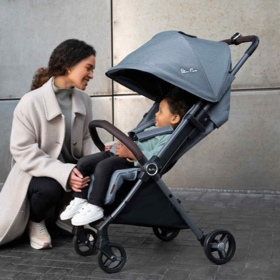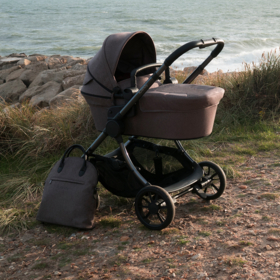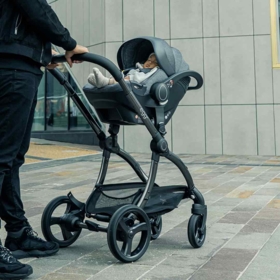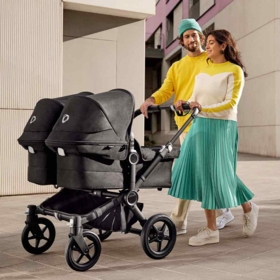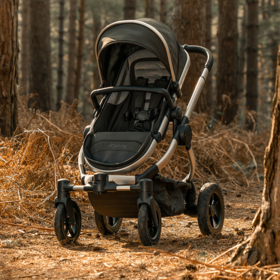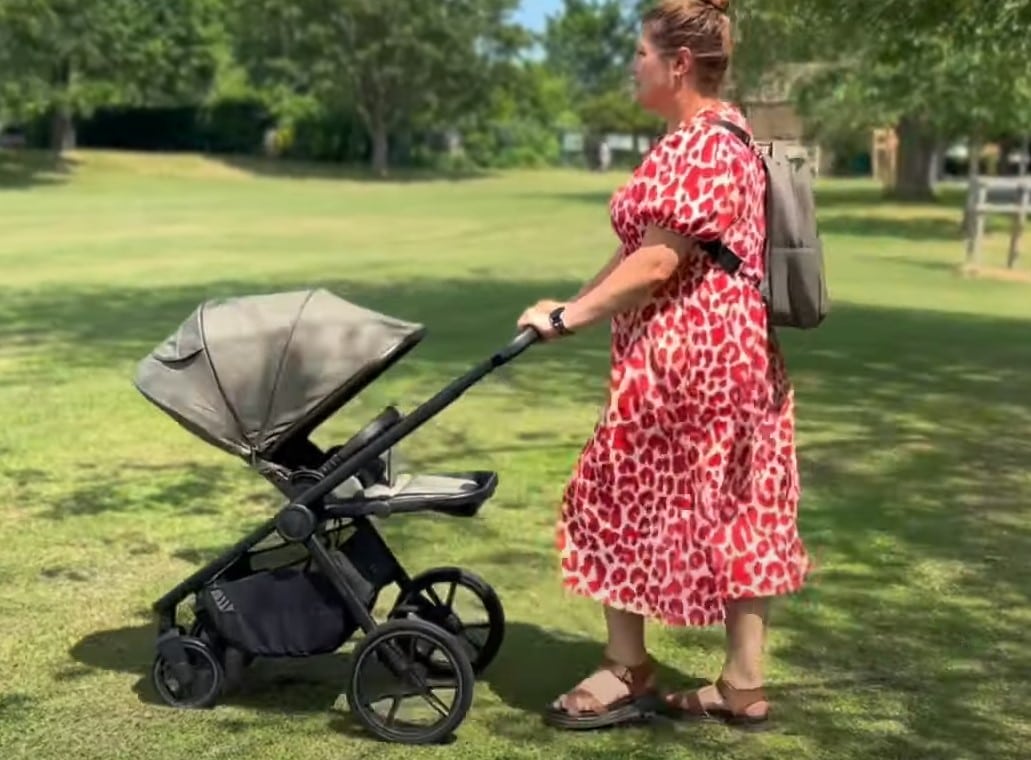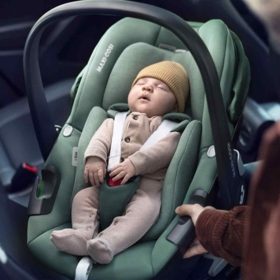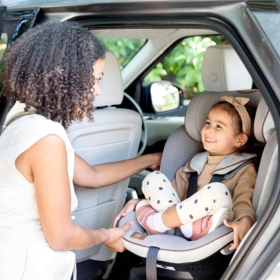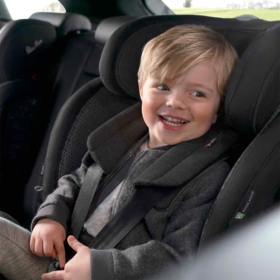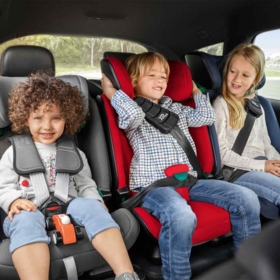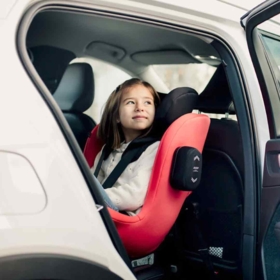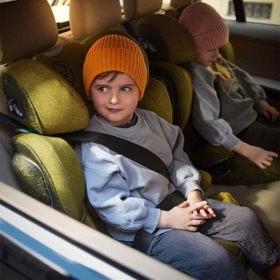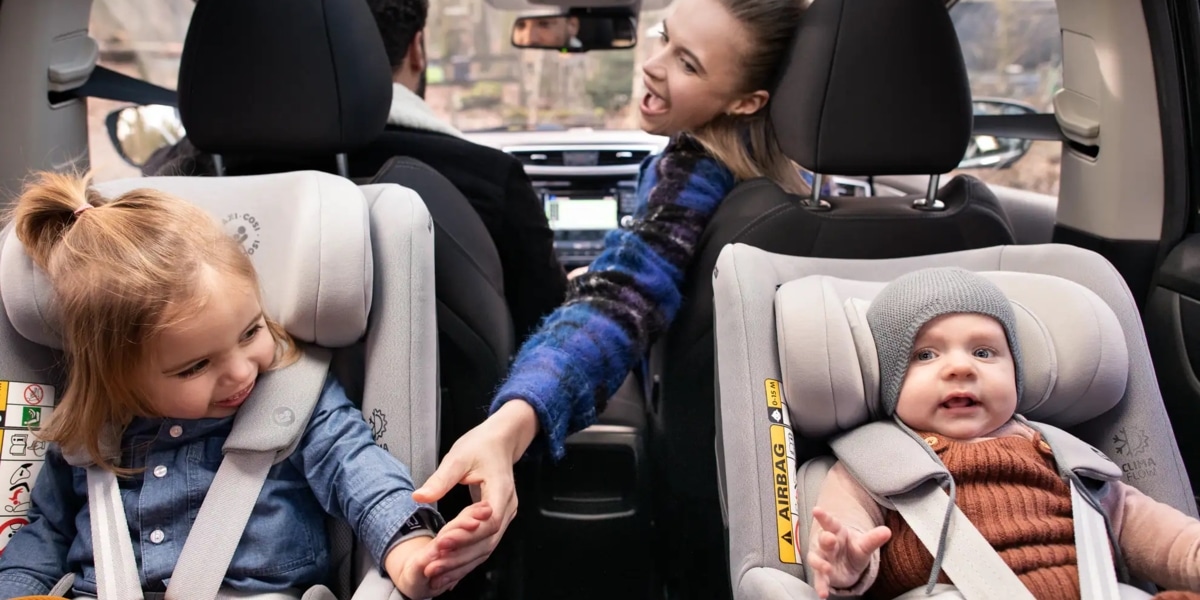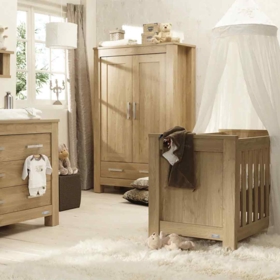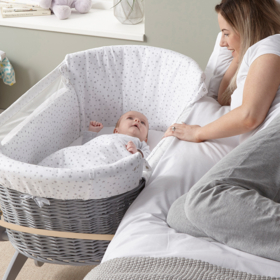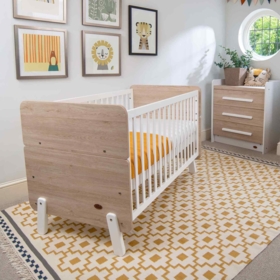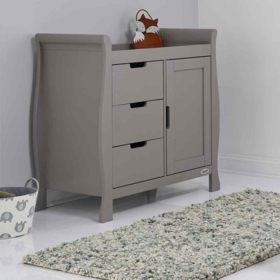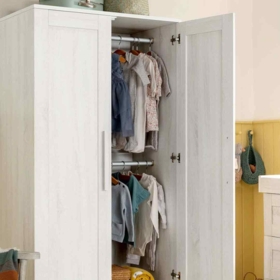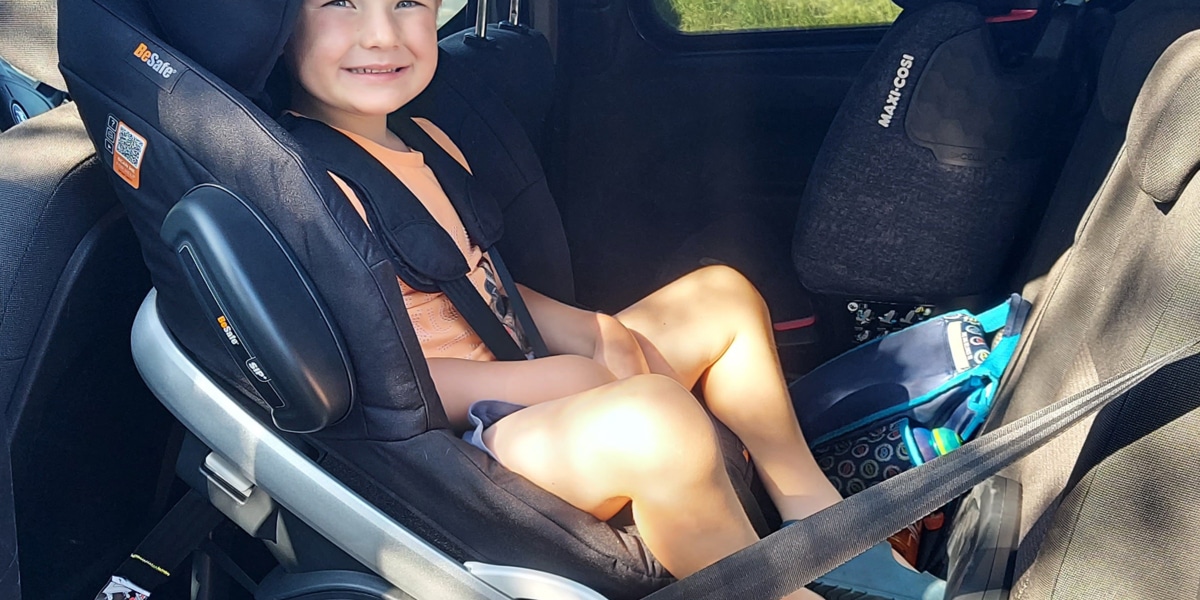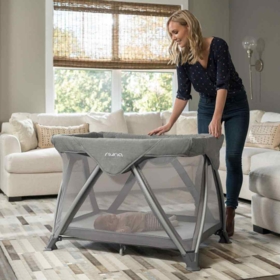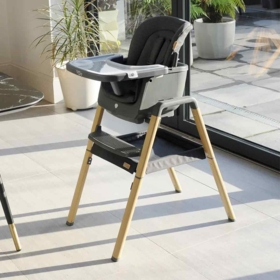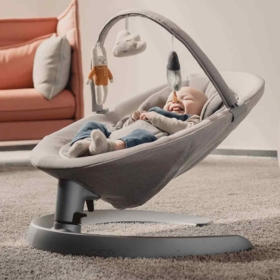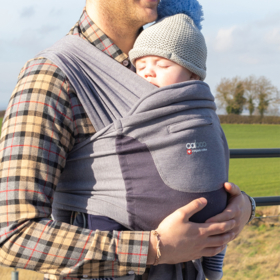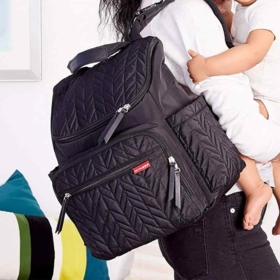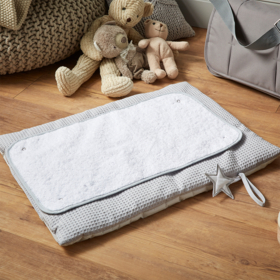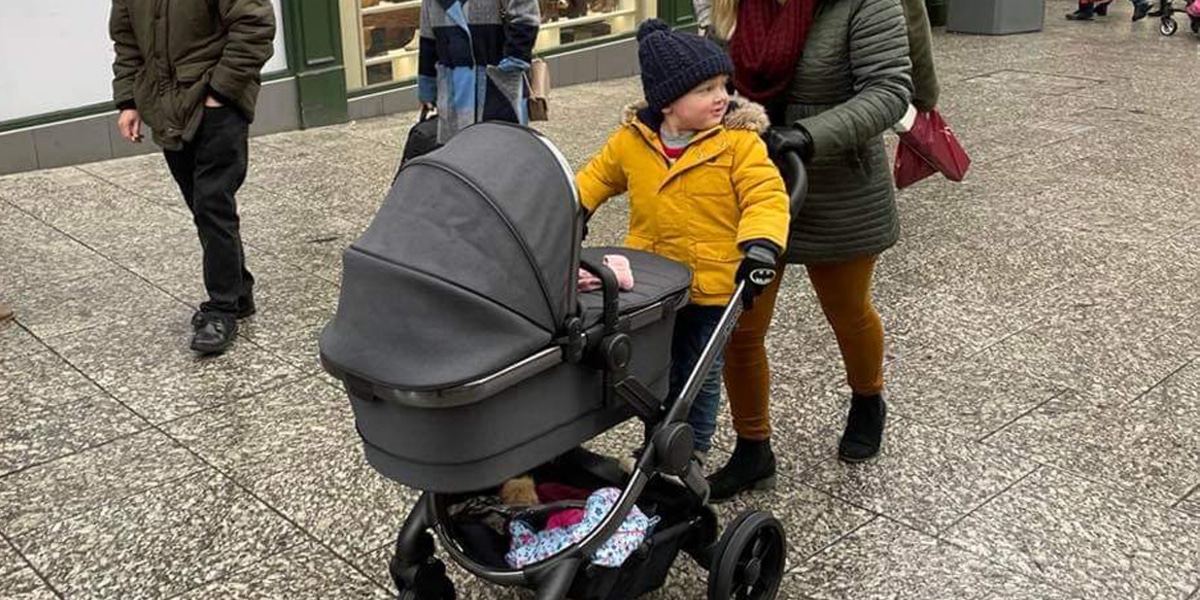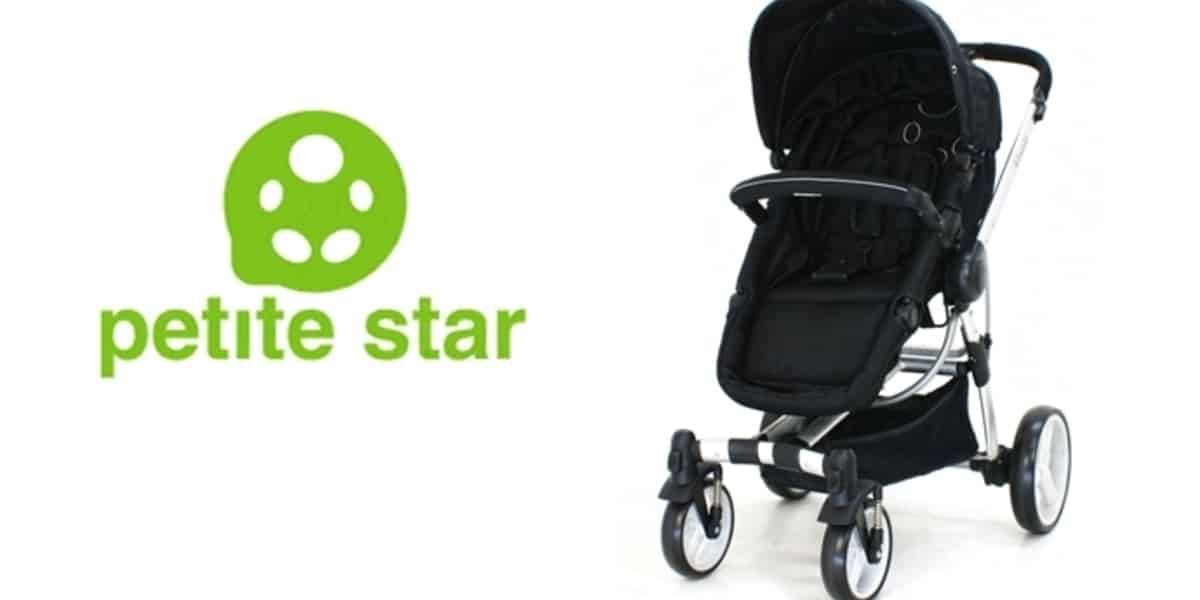Quick Summary: Petite Star have been more of a rising star than a petite one over the past few years, going from strength to strength with popular models such as the Zia+ and the Kurvi taking centre stage. The Klassic is similar to their Kurvi model in many ways, but has a few subtle differences which make it more pocket friendly than the Kurvi.
Whats good?
- Exceptional value for money
- Lots of features
- Quality feel chassis
Whats not so good?
- Unnerving bake system
- Fabrics lack finesse
- Small shopping basket
Table of contents
Chassis
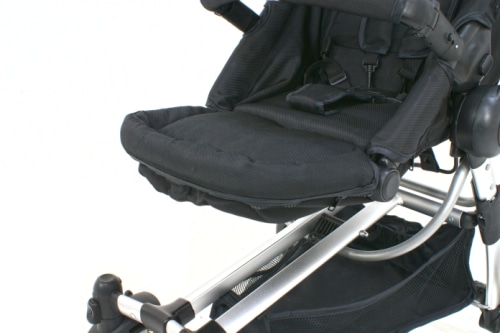
The first thing I noticed about the chassis of the Klassic is the brushed aluminium style metal parts; they look more hard wearing and somehow classier than shiny chrome or a matt black finish. The chassis itself is fairly easy on the eye, with gentle curves giving it a modern feel, along with the distinctive design that comes with a scissor fold pushchair. Once the wheels are popped on and the pushchair is up it becomes clear to see that this really is a ‘pushchair' rather than a stroller. It's fairly hefty (weighing in at 11.6kg) and although it feels nimble enough around tight corners you're not going to be dashing along at lightning speed with it.
The height adjustable bar handle is covered in soft foam, with the handle adjustment controlled by a familiar squeeze button in the centre. The two front and two rear wheels are linked together by a central ‘prong', which inevitably leads to pretty poor shopping basket space and access (although you can easily unhook a corner to give you a bigger gap),but this combined with the bar handle as opposed to two separate ones leaves little scope for a supermarket sweep style shopping experience.
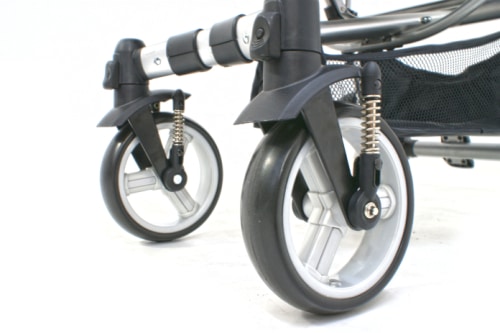
The front and rear wheels are a decent size, and should make covering longer distances easy work, and although the wheels are the solid plastic type, there is some quite obvious suspension on the front wheels and at the back which should make for a smooth ride in most urban environments.
I'm not a huge fan of the brake on this pushchair despite the fact that the flip flop friendly paddle style is usually one I like, especially when it is linked to both wheels like this one. The brake pedal isn't centrally located on the back axle – it's slightly to the right – and I found myself more often than not swiping my foot around down there until I found it – it's not instinctive to search to the side. Secondly the brake doesn't always engage straight away – if you don't have the teeth of the cogs on the wheels lined up correctly, you need to jiggle the pushchair a little bit forward or backward until the brake snaps into place – even though you may have the brake pedal fully depressed already, not only is this not ideal, I found it more than a little unnerving.
Seat & Carrycot
The seat on the Klassic can be used as either a traditional forward or rear facing seat, or it can quickly and easily be converted to a carrycot – without the need for any other fabrics or spare parts.
All you do is undo two clips under the seat that drop the leg rest down to create the bottom half of the carrycot, fully recline the seat back to create the top half, and then tilt the seat back using a squeezy lever located at the base of the hood/top of the carrycot. The hood can be extended to make more of a traditional carrycot hood – but this is also nice to do to provide extra shade to the seat if you so desire. The straps that you have unclipped can be neatly tucked away to give a more polished look to the pushchair in carrycot mode. To change back to a seat you just reverse the process, it's literally as easy as 1, 2, 3!
Carrycot
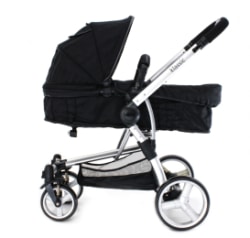
Carrycot mode suits the Klassic, the chassis is well proportioned in relation to the carrycot size, and it looks very smart and sophisticated. The carrycot is very spacious – especially in length and width near the top, although the lower half narrows down quite a lot. By using the hood extension you can get a traditional carrycot hood, although it only covers quite a small proportion of the top half of the carrycot, so if you were putting your newborn in with their feet touching the bottom (to stop them slipping under blankets for example) you might find that the hood doesn't cover them. I would have liked to see the harness straps being removable, but as it is they and the buckle are fairly low profile so with the thick liner covering them baby shouldn't be able to feel any lumps and bumps. Because the carrycot is spacious in length it does seem to ‘wobble' a little more than you normally expect, but it's very securely attached and over smooth ground you would hardly notice it, it might even turn out to be a bonus in getting baby off to sleep that little bit quicker! One thing to note is that the carrycot cannot be used when not on the pushchair chassis, as its soft sides would collapse down and the bumper bar is not strong enough to be used to lift the carrycot.
Seat
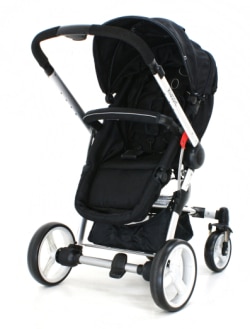
When you're little one has outgrown the ample space of the carrycot you can move to the seat unit, which is suitable from six months. The seat in comparison with the chassis is a bit more functional rather than fetching. Rough to the touch the fabrics look hard wearing, but lack a little bit of the finesse of the chassis.
There isn't a whole lot of head room under the hood, but the backrest height (42cm) is more than adequate to see you through and the seat is fairly large in comparison to some other seats than can be multi-directional and multi-functional. The seat base is sized nicely for a bigger bottom (30cm), although it slopes forward even when anchored down unless a hefty weight is on it, which might be uncomfortable for littler ones at first.
The Klassic has a five point harness, with the waist and shoulder straps being adjustable in length, but sadly not height. The crotch strap is neither adjustable in length or forward and backward, although it is nicely padded. Chest pads are included. The harness buckle itself is easy to use, with a firm button to prevent little fingers undoing it, and each half of the straps can be done up individually.
There is a multi-position adjustable calf rest, and the back rest can be adjusted either using the toggle on the rear of the seat to drop just the back down slightly, or by using the tilt buttons to swivel the entire seat into one of three positions. The multi-position hood can be further extended by undoing a zip to reveal another extension panel, and has a Velcro closure peephole window. The gate opening bumper bar has a removable cover with reflective piping which co-ordinates well with the piping on the hood.
Folding
Folding the pushchair can be done either with the seat/carrycot removed completely or with the seat on and in an upright forward facing position. On paper the fold sounds easy, but there is a little bit of jiggling required to get it to perform although once you get the hang of it it's nice and easy. With your foot holding the back axle down, gently lift the handle bar whilst depressing a tiny red button on one side of the handle bar whilst sliding two latches (one located on each side of the handle bar) upwards, the lock is released and the handle bar can then move slowly downwards to fold the pushchair. There is a red clip that you can use to lock the pushchair into the folded position.
Although not the smallest fold in the world the footprint can be made even smaller by dropping the footrest right down and locking the swivel wheels underneath the pushchair, with the pushchair in this position you can also stand it up on end which is handy, and also use the handle bar to wheel it along to and from the car for example. If you want to further reduce the size you can very easily pop the wheels off using the snibs on the back axle. It's easy to reverse the process, but I found the lack of a reassuring ‘clunk' a little unnerving, and found myself repeatedly checking that it was locked (although it always was).
Conclusion
The most important thing to note about the Petite Star Klassic before you think anything else is the price. At around £200 it offers exceptional value for money. It gives you a great ‘from birth' solution with the use of the carrycot feature, which is so nice to have for a newborn. A parent facing seat is a real bonus during those early years and this one is large enough that it should last a decent amount of time. It looks smart and although it has some little niggles, like the brake not fully engaging automatically, and the fact you can't change the shoulder height of the straps it is well worth £200 all day long.
